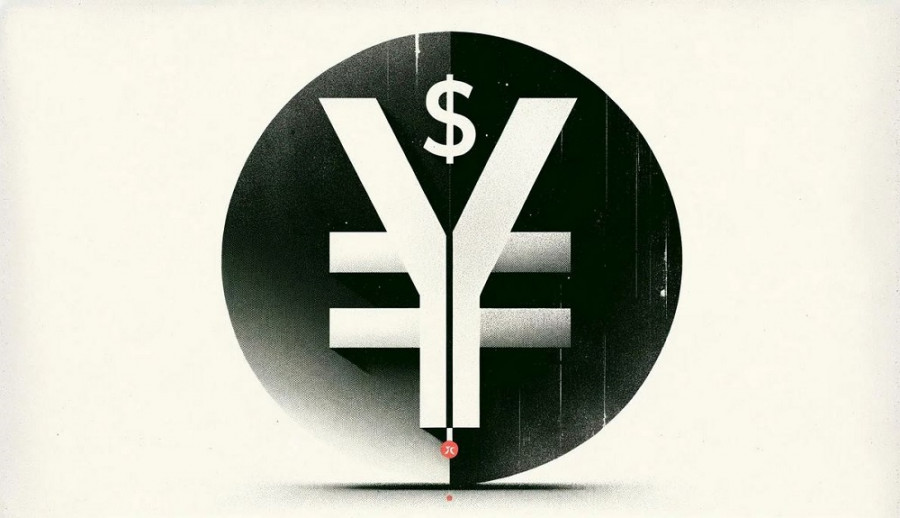At its October meeting, the second-to-last of the year, the Bank of Japan maintained all current monetary policy parameters, keeping the key interest rate at 0.25%. After two rate hikes (in March and July), the central bank decided to pause, likely until the end of this year. While Kazuo Ueda provided a small verbal boost to the yen, trusting the downward impulse of USD/JPY may be premature. The pair's medium-term fate will be determined not in Tokyo but in the U.S., where key labor market data is due on November 1.
Ahead of the Bank of Japan's October meeting, it was almost universally expected that the regulator would take a wait-and-see approach. Several strong arguments supported this outcome, particularly political uncertainty and slowing inflation.
The unexpected results of early parliamentary elections caused turbulence in both Japan's political sphere and financial markets. The conservative Liberal Democratic Party lost a significant portion of its majority for the first time in 15 years, while opposition forces performed surprisingly well. Although the LDP's lack of a majority doesn't necessarily mean a change in the Cabinet, Prime Minister Shigeru Ishiba may face challenges in implementing his policies if he stays in office, as he may need to find a third coalition partner or work with the opposition.
As for inflation, the general CPI slowed to 2.5% in September, declining from 3.0% in August, marking its first deceleration since March this year and its lowest level since April. The core consumer price index also showed a downward trend, decreasing to 2.4% (the lowest since April). This trend will likely continue in October, as suggested by the Tokyo Consumer Price Index, a leading indicator for price trends across Japan.
Throughout October, Bank of Japan Governor Kazuo Ueda repeatedly stated that the central bank would not rush to tighten monetary policy further. Thus, the October meeting's outcomes, aligning with most experts' expectations, were unsurprising. However, Ueda's rhetoric did provide support to the yen. The USD/JPY pair fell by more than 150 points, reaching 151.95. In my opinion, Ueda did not make any concrete statements or provide clear hawkish signals to the market. He merely did not rule out future steps toward policy normalization. He noted that companies and large enterprises are "now more willing to raise wages, increasing the cost of services and end products." In this context, he added that the central bank will continue to adjust the degree of easing "to ensure the Bank's economic and price forecasts are realized."
Additionally, the central bank released its quarterly forecast, predicting that inflation will remain at 2% "in the coming years," dropping from 2.5% in the current fiscal year ending in March to 1.9% in the next fiscal year (March 2025 - March 2026).
Kazuo Ueda's comments and the Bank's growth and inflation forecasts suggest that the possibility of a rate hike is still on the table, with the timing yet to be determined. Some analysts believe the Bank of Japan may opt for another rate hike in December, the year's final meeting. Others believe the bank will only raise rates in December if inflation accelerates, whereas it is currently slowing. If key inflation indicators continue to decline, the central bank will likely remain on hold until March-April 2025, awaiting the outcomes of "shunto" � wage negotiations between businesses and unions, which will play a decisive role in shaping next year's policy tightening outlook.
In my view, the market may have overestimated the hawkishness of the Bank of Japan's stance. It's premature to speculate about December's meeting. Kazuo Ueda did not dismiss a hawkish approach, but it will depend on upcoming data, especially the inflation report for October, expected in mid-November. Again, October's Tokyo CPI data showed a decrease in both overall and core inflation in the capital.
All of this suggests that the recent decline in USD/JPY may not be sustainable. The downward movement is influenced not only by a temporary strengthening of the yen but also by a general weakening of the U.S. dollar, with the U.S. Dollar Index under pressure for the second consecutive day. However, if the October Nonfarm Payrolls report, set to be released tomorrow, November 1, shows strong results, the USD/JPY pair could make a 180-degree reversal. A strong ADP report hints that official data could also surprise dollar bulls.
Meanwhile, Kazuo Ueda's "moderate hawkish" messages are too vague to sustain a price drop purely due to yen strength. If the dollar gains momentum, the yen will likely follow, despite the Bank of Japan's signals. Therefore, for now, either stay out of the market (a safer option) or go long (a riskier option, assuming Nonfarm Payrolls won't disappoint) with a medium-term target of 154.00 (the upper line of the Bollinger Bands indicator on the D1 timeframe).










